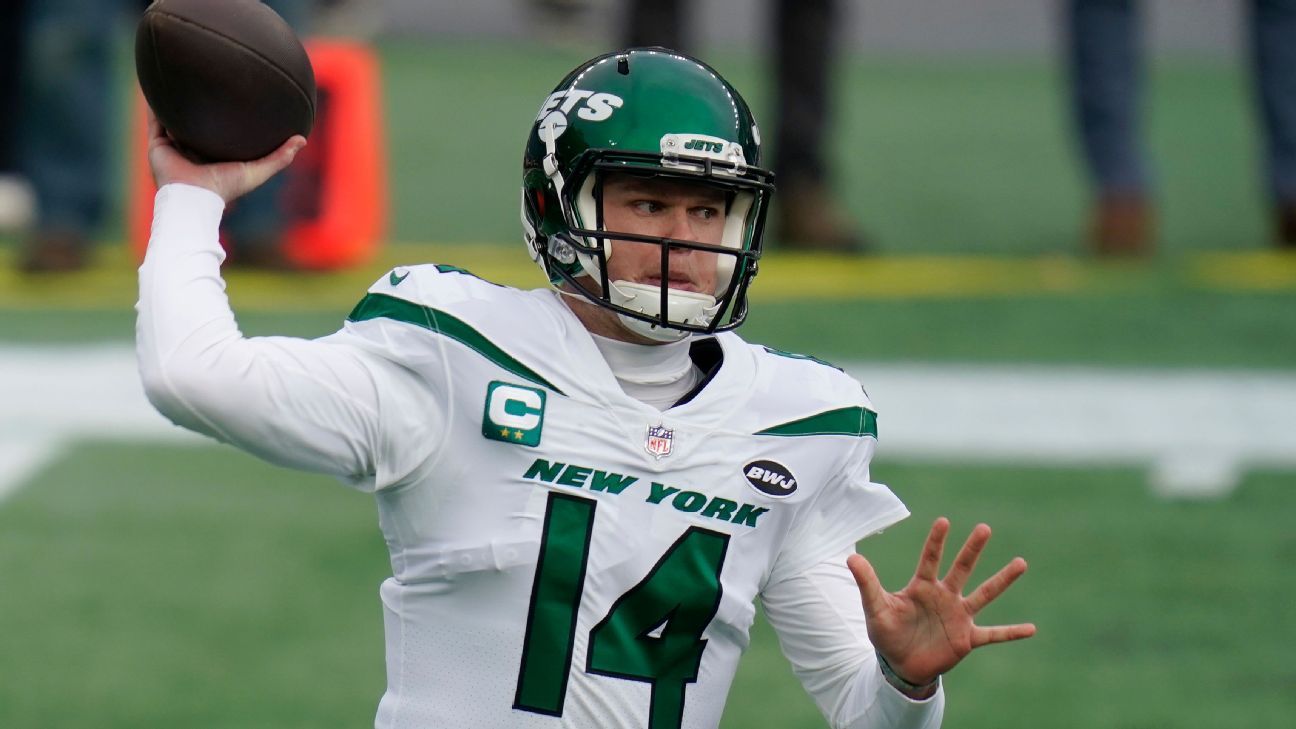FLORHAM PARK, N.J. — Three years after hailing him as a franchise savior, the New York Jets traded Sam Darnold to the Carolina Panthers on Monday, ending months of intense speculation about their quarterback plans.
In return for Darnold, the No. 3 overall draft pick in 2018, the Jets received three picks — a sixth-rounder in the 2021 draft later this month and a second-rounder and fourth-rounder in 2022.
Without a proven quarterback on the roster, the Jets are expected to select Darnold’s replacement with the No. 2 overall pick in the April 29 draft in Cleveland (on ESPN and the ESPN app). The leading candidate is BYU’s Zach Wilson, who has met virtually multiple times with the Jets’ brass.
The organization was conflicted by the decision to part with Darnold, sources said. Jets coach Robert Saleh spoke highly of him, saying he has “unbelievable arm talent.” General manager Joe Douglas also praised him but declined to commit to Darnold last month and indicated he was open to fielding trade inquiries.
Darnold has one year remaining on his rookie contract, with guaranteed salary and bonuses totaling $4.6 million. The Panthers must decide on Darnold’s fifth-year option for 2022 by May 3; the pre-determined amount is $18.8 million, fully guaranteed. He was due to count $9.8 million on the Jets’ cap, but they will get $4.8 million in relief and a $5 million “dead” charge for 2021.
Darnold, 23, failed to reach huge expectations in New York. He showed promise at the end of his rookie season, but he regressed under former coach Adam Gase, who was hired in 2019 — in large part — to develop the former USC star.
In three seasons, Darnold went 13-25 as a starter, with 45 touchdown passes and 39 interceptions. He completed 59.8% of his passes and never finished above 26th in passer rating.
He finished as the NFL’s lowest-rated passer in 2020 (72.7), 36th out of 36 qualifying quarterbacks. His career passer rating is 78.6, which ranks 39th out of 39 since 2018.
Darnold has battled injury and illness throughout his pro career. He missed three games as a rookie (sprained foot), three games in 2019 (mononucleosis) and four games in 2020 (sprained throwing shoulder).
To be fair, he didn’t have much stability with the Jets, as he played under two head coaches and two different offensive systems. He also had no 1,000-yard rushers or 1,000-yard wide receivers, and he played behind an ever-changing offensive line.
The Jets landed Darnold after a blockbuster trade one month before the 2018 draft. Determined to pick a quarterback, they moved up three spots to No. 3, sending three second-round picks to the Indianapolis Colts.
They didn’t think Darnold would be available at No. 3, but the Cleveland Browns pulled a surprise by taking Baker Mayfield No. 1 overall. Running back Saquon Barkley went to the New York Giants, leaving Darnold for the Jets, who had rated him the draft’s No. 1 quarterback.
Ownership wasn’t shy about expressing its excitement.
“I honestly think [people] are going to look back 20 years from now and say this is the moment the Jets shifted into a new gear, that they became a great team,” Jets vice chairman Christopher Johnson said a few days after the draft.
Darnold started opening day as a rookie, infamously throwing a pick-six on his first pass. He settled down and beat the Detroit Lions in a blowout, exciting the Jets’ quarterback-starved fan base. He had an up-and-down season (17 touchdowns, 15 interceptions), but there were enough positives to make the organization believe it had found a long-term answer.
It wasn’t until the 2020 season that questions emerged about his future. Darnold struggled, injured his shoulder and the team started 0-13, putting them in contention for the No. 1 pick in the 2021 draft. With quarterback Trevor Lawrence speculation swirling, Darnold led the Jets to two wins in their final three games, leaving the franchise with the No. 2 pick.
